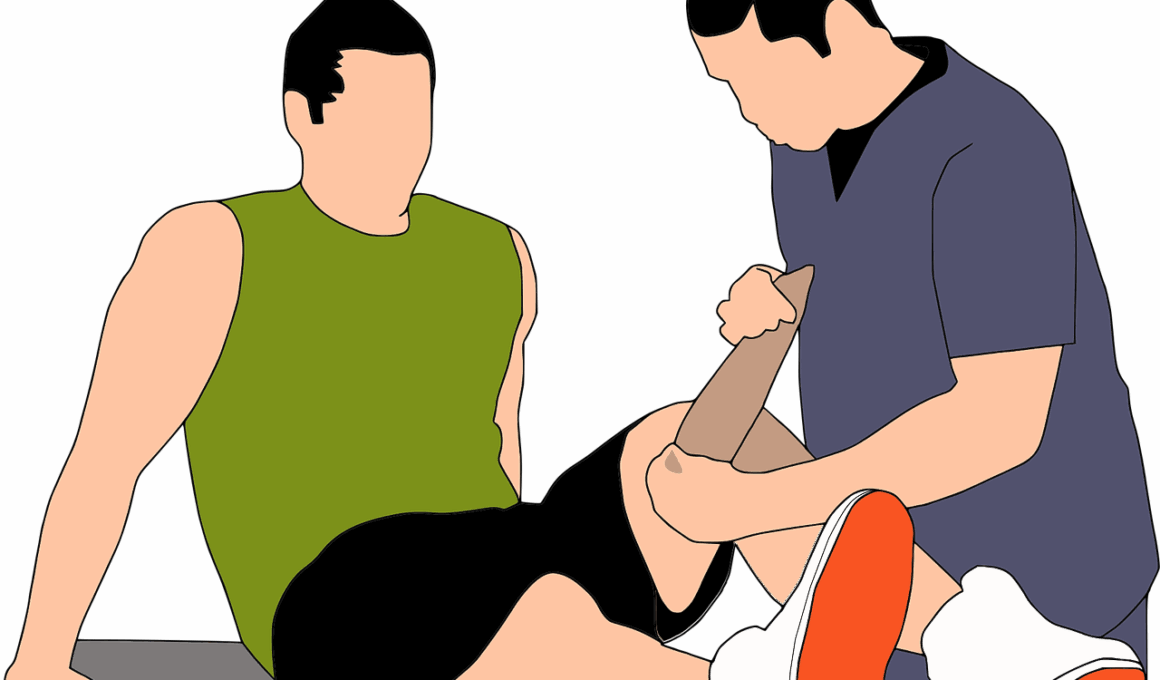Balancing Surgical Interventions and Athletic Career Longevity
In the field of sports medicine, particularly within orthopedic sports medicine, the balance between surgery and long-term athletic careers is a significant concern. Athletes often face injuries necessitating surgical interventions, which can pose risks to their career longevity. Understanding these challenges is crucial for both medical professionals and athletes. Proper assessments are essential for ensuring effective treatment. With advancements in surgical techniques, outcomes have improved, allowing many athletes to return to their previous performance levels. However, the potential for complications still exists, making it vital for athletes to weigh their options carefully. Determining the correct timing for a surgical procedure can greatly influence recovery and performance. Early interventions may allow for quicker returns to play, yet risks must be evaluated thoroughly. It’s also important for athletes to engage in dialogue with their healthcare providers about their aspirations and concerns. Collaborative decision-making can lead to more personalized care strategies. The popularity of minimally invasive techniques is rising, promising quicker recovery times. Athletes are encouraged to stay informed about innovations in treatment options to make educated choices regarding their health and careers.
The collaboration between orthopedic surgeons and athletic trainers is vital in ensuring athletes receive comprehensive care. Ongoing communication helps in monitoring recovery and adjusting rehabilitation programs tailored to individual needs. The use of technology in rehabilitation is becoming increasingly common, allowing for more precise tracking of an athlete’s progress. Advanced imaging techniques help to assess injuries more accurately, providing surgeons with the data necessary for planning effective interventions. Post-surgery, athletes often undergo specific rehabilitation protocols designed to restore strength and mobility gradually. Emphasis on injury prevention is critical, as re-injury can significantly impact career longevity. Additionally, education on proper techniques and conditioning will assist in reducing future risks. Creating a supportive team environment can better facilitate communication between all parties involved. To optimize recovery, athletes should adhere strictly to medical advice, including modifications to training regimes. By integrating rehabilitation with ongoing training efforts, athletes can achieve a smoother transition back into their sport. Ultimately, the goal is not just a return to athletic competition but sustaining performance over the long-term. By prioritizing health through collaborative care, athletes can enhance their career longevity and performance quality.
Understanding Injury Risks
Athletes face numerous injury risks in various sports, making awareness critical for effective injury management and prevention. High-impact and repetitive motion sports can result in significant musculoskeletal injuries. Factors such as the intensity of training, inadequate recovery, and pre-existing conditions contribute to the susceptibility to injuries. Athletes must stay educated about the physical demands of their sport and undergo proper conditioning to minimize risk. Additionally, observation of techniques and styles is necessary in sports training to prevent avoidable injuries. The role of flexibility and strength training cannot be understated, as these components are essential in maintaining overall health. Research has shown that a tailored strength training program can significantly reduce injury incidences. Physiotherapists can assist athletes in developing conditioning regimens that enhance performance while promoting joint health. Addressing ergonomics related to sports equipment is essential, as poorly fitting equipment can lead to increased injury risk. Coaches must remain vigilant in recognizing the early signs of injury. Prompt actions in addressing symptoms can go a long way in preventing more serious injuries requiring surgical intervention, thus aiding in athletic career longevity.
Injury rehabilitation can vary significantly based on the type and severity of the injury sustained. While some injuries may require invasive procedures like surgery, others might be treated with conservative approaches such as rest and physical therapy. The effectiveness of rehabilitation is influenced by the athlete’s adherence to prescribed protocols and motivation levels. Effective rehabilitation typically involves a multi-faceted approach, combining physical therapy, strength training, and mental conditioning. Psychological factors play an important role during recovery, as athletes may experience fear of re-injury or decreased confidence in their abilities. Mental resilience is vital, and psychologists specializing in sports can support athletes in overcoming these challenges. Progress tracking through functional assessments can help both athletes and medical professionals gauge recovery efficiency. As athletes transition back to full competition status, they must gradually integrate into their training regimens to avoid overexertion. Education on pacing and listening to body signals lifts the success rate of safe returns. Ultimately, the goal of rehabilitation should be not just to return to sport, but to perform optimally, contributing to sustained athletic careers and overall wellbeing.
Long-Term Considerations Post Surgery
Long-term considerations following surgical interventions are paramount in sustaining an athlete’s career. Surgical procedures can introduce potential complications affecting recovery and long-term performance. Scar tissue development and joint health are common concerns that demand careful long-term management. Continuous monitoring by sports medicine professionals ensures that any arising issues are addressed swiftly. Active participation in preventative measures post-surgery, such as joint mobility exercises, can significantly enhance long-term outcomes. Setting realistic expectations following surgery helps manage athletes’ mindsets regarding recovery timelines. Athletes should understand that returning to peak performance may take time and diligence. Regular follow-ups and assessments can inform necessary adjustments to training routines. Nutrition also plays a pivotal role; a well-balanced diet fortified with essential nutrients can enhance recovery and overall athletic performance. Furthermore, athletes must be educated on the indicators of potential complications or setbacks, allowing for an early response. Emotional support from the athletic community nurturing motivation and resilience cannot be overemphasized. Understanding the journey of recovery post-surgery prepares athletes for challenges and aids in the successful transition back to competitive levels.
Effective communication between athletes and their healthcare teams fosters a greater understanding of treatment pathways and their implications. Building trust with surgeons and trainers enables athletes to voice concerns openly and collaboratively develop rehabilitation goals. As technological advancements continue to influence sports medicine, athletes should remain informed about emerging developments post-surgery. Innovations in regenerative medicine, such as stem cell therapy, are gaining traction and could potentially transform recovery processes. By exploring these options thoroughly, athletes can make educated choices on treatments that resonate with their long-term aspirations. Adopting a multidisciplinary approach encourages comprehensive care, addressing physical and mental health. Incorporating mindset training and psychological support into recovery practices enhances athletes’ resilience, preparing them to face future adversities post-intervention. Athletes equipped with extensive knowledge and support tend to navigate post-surgical challenges more effectively. Engaging with peers who have experienced similar interventions creates a valuable support network, enabling shared experiences and advice. This communal approach to recovery can inspire motivation and confidence, leading to improved career longevity through successful navigation of both surgical interventions and athletic aspirations.
Conclusion: Advocating for Balanced Approaches
Advocating for balanced strategies in orthopedic sports medicine ultimately enhances athletes’ longevity and performance. It is crucial for athletes to engage actively in their treatment decisions, weighing the implications of surgical interventions against potential impacts on their careers. Collaboration among athletes, trainers, and medical professionals is essential for achieving optimal outcomes. Regular assessments and open communication can facilitate the early identification of issues, allowing timely alterations in treatment plans. Athletes must prioritize mental resilience as a key component of recovery and performance. A focus on preventative care alongside treatment paves the way for sustainable athletic careers. These principles underline the importance of informed choices in every aspect of athletic life. Offering education regarding the consequences of both intervention and injury promotes the health and welfare of athletes in their sports. As medical advancements evolve, staying informed will empower athletes to embrace new treatment possibilities that align with their career ambitions. Above all, fostering a culture of proactive health management is crucial. Striving for longevity in athletic careers means striking a balance between intervention and optimal performance, ensuring that athletes can thrive both on and off the field.
This is the final paragraph of the article.


